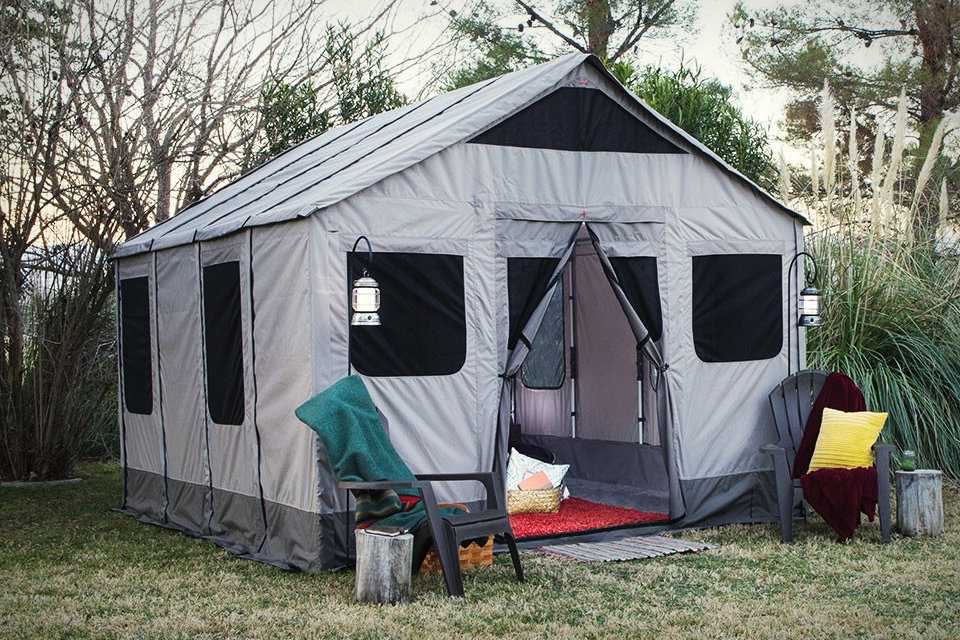Setting up a camping tent properly is essential for a comfortable and enjoyable outdoor experience. Whether you’re a seasoned camper or a first-timer, knowing how to pitch your tent correctly can make a significant difference in your comfort and safety. This guide offers practical tips for setting up your camping tent, ensuring that your outdoor adventure is as pleasant as possible.
Choose the Right Campsite
Selecting the right campsite is the first step in setting up a camping tent. Look for a flat, level area that is free from rocks, roots, and other debris. A level surface ensures that your tent remains stable and comfortable throughout your stay.
Avoid placing your tent in low-lying areas where water might collect in case of rain. Instead, choose a slightly elevated spot to prevent water from seeping into your tent. Additionally, consider the direction of prevailing winds to ensure your tent is positioned to provide maximum protection from gusts.
Check the Weather Forecast
Before setting up your camping tent, it’s crucial to check the weather forecast for the area where you’ll be camping. Understanding the weather conditions will help you prepare for any potential challenges and choose the appropriate gear.
If rain is expected, ensure that your tent is equipped with a rainfly to keep the interior dry. For sunny conditions, consider positioning your tent to provide shade and avoid overheating. Being aware of the weather will allow you to make adjustments and enhance your camping experience.
Prepare the Ground for Tent Setup
Preparing the ground for your camping tent involves clearing the area of any sharp objects or debris that could damage the tent fabric. Use a groundsheet or tent footprint to provide an additional layer of protection between the tent and the ground.
Ensure that the area is dry and free from moisture before setting up your tent. If the ground is damp, using a groundsheet can help prevent moisture from seeping through and making the inside of your tent uncomfortable.
Assemble the Tent Poles
The tent poles are crucial for providing structure and stability to your camping tent. Begin by unpacking and laying out the poles, making sure to identify each one according to the instructions provided with your tent.
Assemble the poles according to the manufacturer’s guidelines, usually by connecting the segments and ensuring they fit together securely. Once assembled, the poles should be inserted into the designated sleeves or clips on the tent fabric to create the tent’s frame.
Position the Tent and Stake It Down
Once the tent frame is assembled, position the tent in the prepared campsite area. Make sure the tent is centered and aligned correctly with the entrance facing the desired direction.
Secure the tent by staking down the corners and edges. Use sturdy tent stakes and hammer them into the ground at a 45-degree angle for optimal stability. Ensure that the tent is taut and free from sagging to prevent rainwater from pooling on the fabric.
Attach the Rainfly
A rainfly is an essential component of your camping tent, especially in adverse weather conditions. It provides an extra layer of protection against rain, wind, and sun.
After positioning the rainfly over the tent, secure it to the ground using additional stakes or guy lines. Make sure the rainfly extends beyond the tent’s edges to prevent water from seeping in. Adjust the tension of the rainfly to ensure it fits snugly over the tent without touching the tent fabric.
Ventilate the Tent
Proper ventilation is crucial for maintaining a comfortable interior environment inside your camping tent. Ensure that the tent’s vents or windows are open to allow airflow and reduce condensation.
In warmer weather, increase ventilation by opening additional vents or windows to keep the tent cool and breezy. In colder weather, adjust the ventilation to retain warmth while still allowing some airflow to prevent condensation buildup.
Organize the Interior
Once your tent is set up, organizing the interior can enhance your camping experience. Use tent organizers, storage pockets, or a camping gear loft to keep your belongings tidy and easily accessible.
Place your sleeping gear, such as a sleeping bag and pad, in a designated area within the tent. Keep essentials like a flashlight, water bottle, and small tools within reach to ensure convenience during your stay.
Inspect and Maintain the Tent
Regularly inspect your camping tent for any signs of damage or wear. Check the tent fabric, seams, and poles for any issues that may affect its performance. Address any problems promptly to prevent further damage.
Keep the tent clean and dry when not in use to prolong its lifespan. Store the tent in a cool, dry place, and avoid packing it away while it’s still damp. Proper maintenance will ensure that your tent remains in good condition for future camping trips.
Conclusion
Setting up a camping tent properly is essential for a comfortable and enjoyable outdoor experience. By choosing the right campsite, preparing the ground, assembling the tent poles, and following the steps outlined above, you can ensure a successful and pleasant camping adventure. Proper ventilation, organization, and regular maintenance further enhance your camping experience, allowing you to fully enjoy the great outdoors. Embrace these tips to make your next camping trip memorable and stress-free.




